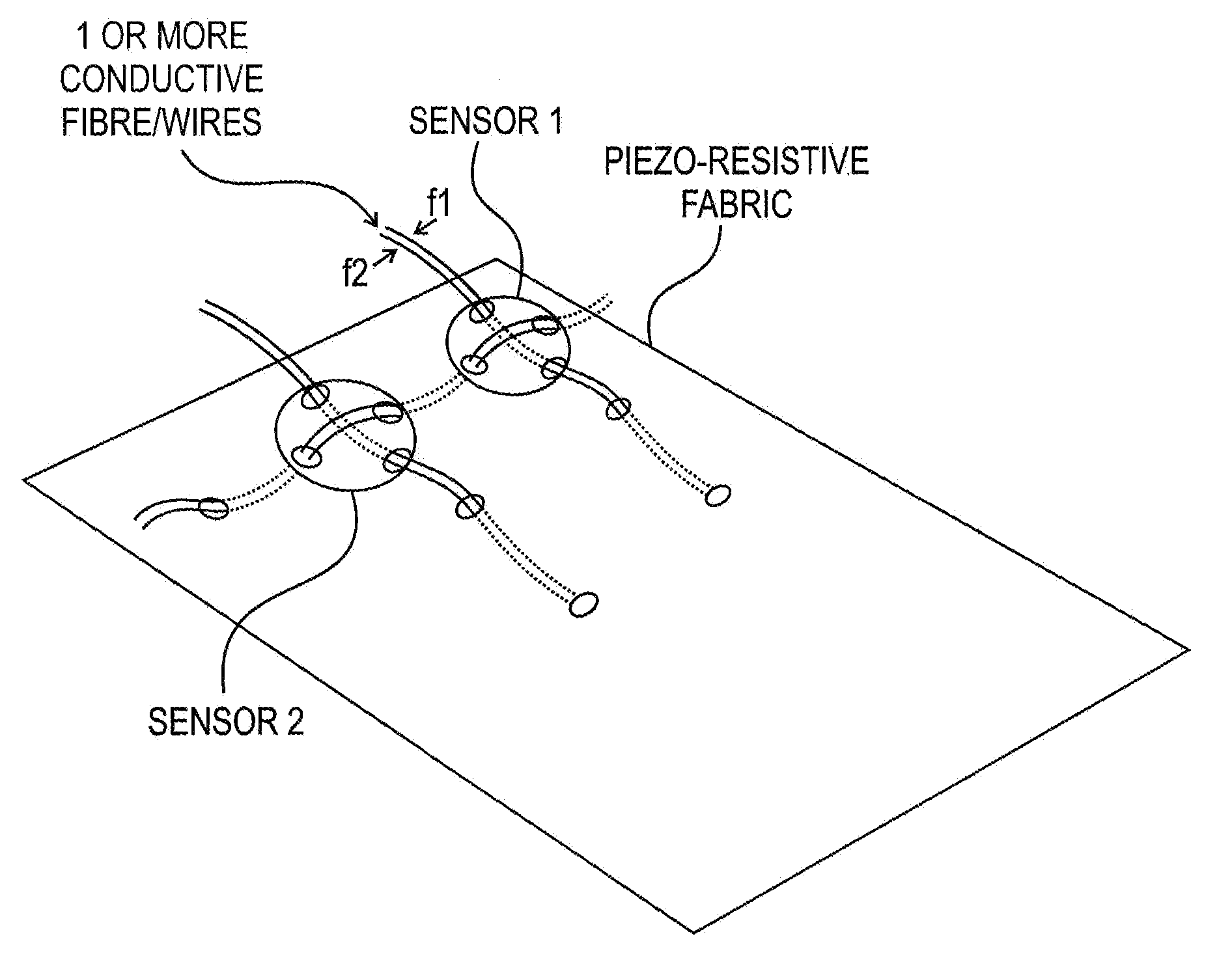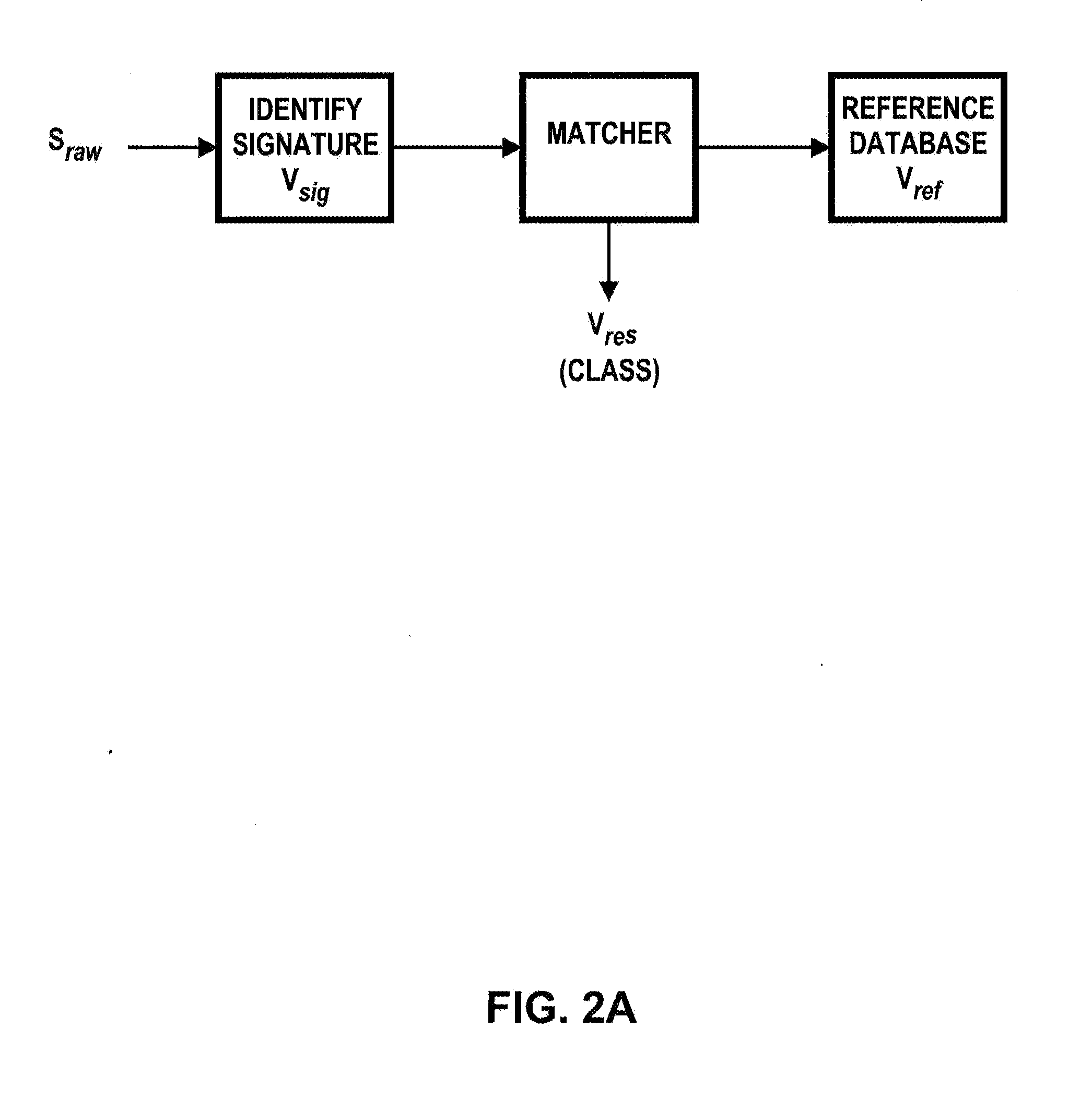Pressure Signature Based Biometric Systems, Sensor Assemblies and Methods
a biometric system and pressure signature technology, applied in the field of pressure signature based biometric systems, sensor assemblies and methods, can solve the problems of insufficient reliability and fidelity in gathering and analysing data, changes in electrical inductance or capacitance at a selected time, and the adaptation of sensor pressure arrays to measure human features, etc., to achieve accurate and reliable electronic and visual representations
- Summary
- Abstract
- Description
- Claims
- Application Information
AI Technical Summary
Benefits of technology
Problems solved by technology
Method used
Image
Examples
Embodiment Construction
[0027]Referring to FIG. 1, a flow chart for data analysis is outlined showing a series of steps for transforming sensor data. The sensor values sensed by sheet sensor are a set of values on the sensor plane [Sraw]m×n in FIG. 1, block ‘c’. These raw values are of limited value for feeding diagnostic or analytic models. The size of this data can be quite large, e.g. if m=128, and n=64, a typical 8192 sensor array is described. If the signal is sampled at 1 Hz, a large dataset is transformed according to the method of FIG. 1. The signal is calibrated, subjected to noise removal, and option, decoupling algorithms as described below. This cleaned and calibrated signal is denoted by [Sp]m×n, and is the same size as Sraw.
[0028]This pressure signature itself can be computed by a variety of methods. The processed signal with an m×n sized array is a reasonable candidate for the signature. Some techniques for dealing with the full sized data set are discussed in US 2012 / 0323501 A1, which is sp...
PUM
| Property | Measurement | Unit |
|---|---|---|
| pressure | aaaaa | aaaaa |
| conductive | aaaaa | aaaaa |
| conductance | aaaaa | aaaaa |
Abstract
Description
Claims
Application Information
 Login to View More
Login to View More - R&D
- Intellectual Property
- Life Sciences
- Materials
- Tech Scout
- Unparalleled Data Quality
- Higher Quality Content
- 60% Fewer Hallucinations
Browse by: Latest US Patents, China's latest patents, Technical Efficacy Thesaurus, Application Domain, Technology Topic, Popular Technical Reports.
© 2025 PatSnap. All rights reserved.Legal|Privacy policy|Modern Slavery Act Transparency Statement|Sitemap|About US| Contact US: help@patsnap.com



